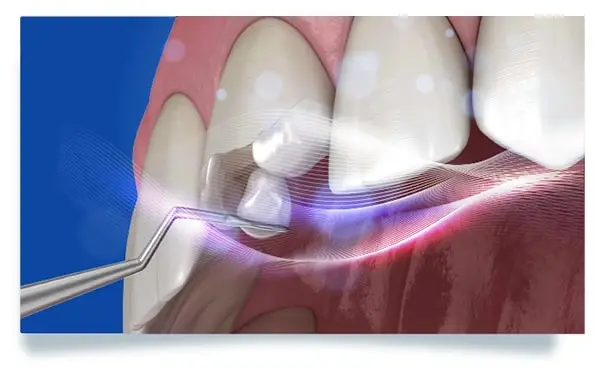Broken or Chipped Tooth: How to Repair It?
A cracked or chipped tooth can result from various incidents, from a direct blow to the jaw to chewing on particularly hard food. Although our teeth are covered with enamel, the hardest and most mineralized tissue in our body, they are not indestructible. Accidents such as a fall, facial trauma, or even habits like teeth grinding can damage this natural protection. This type of damage is common and can affect people of all ages, children and adults alike.
Causes of Broken or Chipped Teeth
Before exploring repair solutions, it's important to understand what can cause a tooth to break or chip. Injuries, cavities, teeth grinding, and even chewing hard foods can all contribute to a cracked or chipped tooth.
What to Do if You Have a Broken or Chipped Tooth
If you have a cracked or chipped tooth, it's crucial to see a dentist promptly to prevent infection or, in severe cases, tooth loss. While waiting for your appointment, here are some steps to take:
- Rinse your mouth with a saltwater solution to clean the affected area.
- If the crack has created a sharp edge, cover it with a piece of sugar-free chewing gum to protect your tongue and other parts of your mouth.
- Eat soft foods and avoid biting with the damaged tooth.
- To relieve pain, you can take an appropriate analgesic.
- If you see bleeding, apply a piece of medical gauze to the tooth and apply gentle pressure until the bleeding stops.

Direct Composite Tooth Reconstruction
Ceramic material is often used in indirect restoration techniques to repair teeth damaged by fractures or chips. Composed primarily of porcelain, this material is very strong and can be manufactured to perfectly match the natural shade of your teeth. Ceramic is known for its durability and ability to mimic the appearance of natural teeth.
In addition to being used for crowns and veneers, ceramic offers a superior aesthetic solution. Indirect ceramic restorations allow you to regain not only the functionality but also the original appearance of the damaged tooth, offering a very natural and harmonious final result.
EXPRESS QUOTE
Would you like more information?
Your health, our priority.
Request your free quote
Treatment of Broken or Chipped Teeth
The treatment required for a cracked or chipped tooth depends on the severity of the damage. If only a small part of the enamel is affected, a simple repair can often be done in a single visit to the dentist. However, if the damage is more extensive, the procedure may require several appointments.
Here are some treatment options your dentist might consider to restore a broken or chipped tooth:
Dental Fillings
Dental fillings are commonly used restorations to repair teeth damaged by cavities, cracks, or chips. This procedure involves removing the damaged portion of the tooth, followed by the application of a restorative material, such as composite resin or dental amalgam. Fillings are designed to restore the shape and function of the tooth while preserving as much of its natural structure as possible. Thanks to advances in modern dentistry, dental fillings offer an effective and aesthetic solution for restoring damaged teeth, allowing patients to regain their smile and confidence.
Root Canal Treatment
Root canal treatment, also known as endodontic treatment, is a dental procedure used to treat teeth whose inner pulp is infected or damaged. When the dental pulp is affected by deep decay, a crack, or a fracture, it can become painful and sensitive. Root canal treatment involves removing the infected or damaged pulp, cleaning and disinfecting the root canal, then filling and sealing it to prevent reinfection. This procedure saves the tooth and eliminates pain while preserving its function and structural integrity. Although often perceived as intimidating, root canal treatment is generally painless and can be performed in one or more sessions, depending on the complexity of the case. Thanks to this intervention, many people can keep their natural teeth and regain a healthy and functional smile.
Dental Crown
If a large portion of the tooth breaks off or if the fracture is due to significant decay, the dentist may file down the remaining tooth and cover it with a dental crown. This crown is specially designed to protect the damaged tooth and improve its appearance, providing both durability and aesthetics.
Endodontic Treatment (Root Canal)
When a tooth exhibits symptoms such as pain, discoloration, or sensitivity to heat, it may indicate that the pulp is damaged due to a tooth fracture. In this case, the most appropriate treatment is root canal treatment. This painless procedure involves removing the damaged pulp, cleaning the root canal, and then sealing it.
Often, after root canal treatment, the tooth needs to be covered and protected by a dental crown.
Repairing a broken or chipped tooth with dental veneers
If the chipped or cracked tooth is located in the visible part of the dental arch, dental veneers can be an ideal solution to restore the appearance of the damaged tooth.
Dental veneers are thin layers of ceramic or porcelain applied to the surface of the teeth to mask imperfections. In addition to repairing damage to the teeth, veneers can also solve various aesthetic problems such as stains, irregularities in shape or size, misaligned teeth and even slight gaps between the teeth (diastema).
There are different types of dental veneers, each varies depending on the material used, which influences their durability and cost. Ceramic and porcelain veneers are the most commonly used due to their strength and durability.
This option is often chosen by public figures such as actors, athletes and celebrities to obtain a perfect smile without having to resort to surgery.